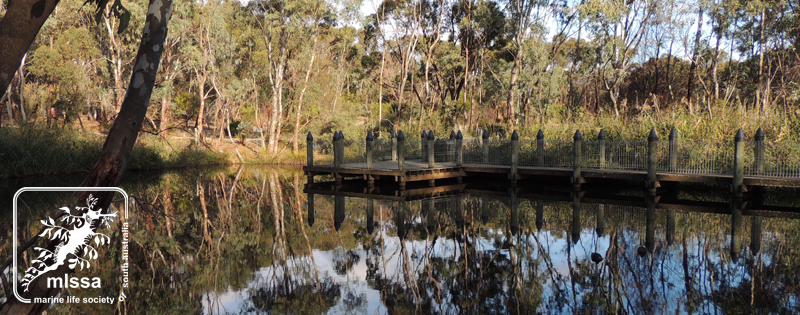Last month I read with concern a report of a talk about wetlands which was reported not to have mentioned stormwater. I was at the talk and remember a map of the drainage system for Adelaide being shown but I guess, like the speaker, I assumed that WETLANDS ARE ALL ABOUT STORMWATER. Wetlands have a threefold function. They remove 80-90% of the sediments carried in the water if it is held in a detention basin for 24 hours and they also remove 80-90% of nutrients and of bacteria from the stormwater.
Adelaide had a wonderful natural wetland system with the Patawalonga, Torrens and Port Rivers being trapped behind sand hills and slowly draining out of the Port River via the natural wetlands of what is now West Lakes. In those days there was a causeway for the tram to get to Henley Beach and there were sometimes floods as far upstream as the Morphetville racecourse. This wetland system has been gradually destroyed by creating an artificial lake at Glenelg, a concrete channel for the Torrens and the large housing development and artificial lake at West Lakes. There are also a series of other large concrete drains discharging stormwater straight out to sea. Since these were completed we have polluted water discharged directly to the sea and huge problems with toxic algal blooms in the Port River which was fit for swimming prior to the construction of West Lakes.
The present ponding basin at the mouth of the Patawalonga does a fair job of removing sediments but not nutrients and bacteria and will be improved enormously by the new wetlands being constructed upstream at Urbrae and planned in the South Parklands. There are serious concerns about proposals to bypass the “Pat” and shunt the water straight out to sea with an even heavier load of sediment than is the case at present. This will have an adverse effect on the beaches north of this proposed new outlet.
It is very important that nutrient levels in storm water be kept to a minimum in order to reduce problems of algal blooms such as blue-green algae in freshwater, and dinoflagellates, “cabbage weed” and the “brown slime” algae common off the metropolitan coast in warm weather. Macrophytes (large water plants) and especially emergent macrophytes, can play an important role in the removal of nutrients and thus limit the density of algal populations which can develop. The removal of nutrients by macrophytes has been reported by several authors – see references.
In open water zones, rooted emergent macrophytes appear to be more efficient than substrate macrophytes (plants which are attached to the bottom but which do not emerge). This is because the emergent aquatic plants act as an oxygen pump, taking oxygen from the atmosphere into their roots and eventually into the water. This makes it available for bacteria and attached algae which grow on the roots help biological uptake of nutrients and the breakdown of organic matter by the bacteria. Wetlands are also considered to be efficient processors of bacteria and BOD (biological oxygen demand), particularly if rooted emergent macrophytes are used rather than submerged ones (Fisher & Clark, 1989).
Wetlands design is important. They need to be protected from trash and large particles so trash racks and gross sediment traps should be installed. Wetlands need to be shallow to work and 25% should be less than one metre depth with the rest having a depth of less than two metres to allow submerged plant growth. Studies suggest that wetlands need to be surrounded by a buffer zone of at least 20 metres wide and that this zone is best planted with vegetation native to the area although grassed areas can be used.
REFERENCES
- Breen, P., A. Chick, D. Mitchell and K. Rodgers (1988). The use of artificial wetlands to treat wastewaters. The Murray-Darling Freshwater Research Centre annual Report 1987-88 p33.
- Fisher, A.G. and R.D.S. Clark (1989). Urban Stormwater – A resource for Adelaide. EWS Lib. Ref. 89/16
- Sydney Metropolitan Water, Sewerage and Drainage Board, (1985). Joint study on nutrient removal using shallow lagoon – macrophyte systems. Interim Report May 1987 (unpublished).
Author: Jean Cannon


The earlier report in question was in our April 1997 newsletter